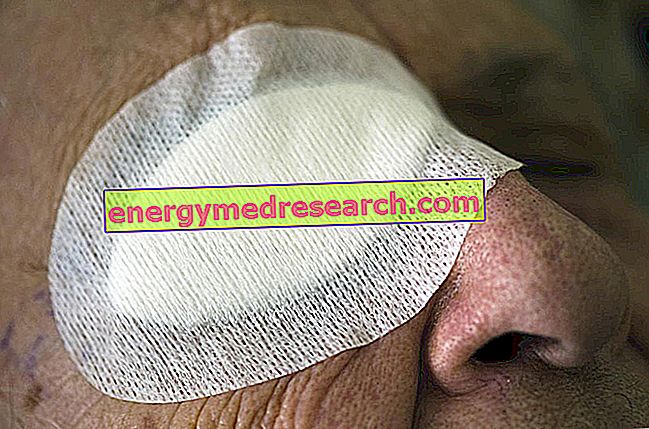Generality
Otitis in children is a widespread disorder that can be caused by various factors.

Otitis is a disease that can affect children of any age and both sexes indifferently, although it seems that the incidence of ear infections is greater in children under the age of four.
Causes
In most cases, otitis in children is the result of a cold or flu, and is caused by bacterial infections or, sometimes, by viral infections.
In pediatric patients, in fact, the microorganisms responsible for infections affecting the airways can easily reach the ear by spreading them into the Eustachian tube, which is the channel that connects the nose to the ear.
This spread of pathogenic microorganisms from the airways to the ear of children is favored by the anatomy of the ear itself. In fact, in children the Eustachian tube is shorter and more horizontal than that of adults and this favors the passage of pathogens, hence the onset of otitis.
Symptoms and Complications
Otitis in children - like that which affects adult patients - can cause symptoms in the ear such as:
- Ear pain that can make it difficult for the child to eat;
- Swelling;
- Redness of the ear canal;
- Emission of purulent material from the ear canal (in the case where otitis occurs in the purulent variant);
- Feeling of plugged ears.
In association with this typical symptomatology, otitis in children can also be accompanied by the symptoms of the disease that favored their development (such as, for example, a cold or the flu), among which we recall:
- Temperature;
- Sore throat;
- Cough;
- Nasal congestion.
If not timely diagnosed and / or if not adequately treated, the infection responsible for otitis can get complicated, involving the eardrum, causing it to be perforated in the most serious cases, and even causing permanent damage to the hearing.
Diagnosis
If you suspect that your child is suffering from otitis, it is very important to contact your pediatrician immediately. The latter - to diagnose the actual presence of otitis - will proceed to carry out an accurate analysis of the symptoms and to examine the ear with the aid of a special instrument called the otoscope.
Therapy
The therapy aimed at the treatment of otitis in children varies according to different factors, such as the type of infection that caused the disorder, the age of the child, the severity of the otitis and the possible consequences deriving from it (perforation of the eardrum, hearing problems, etc.).
In some cases, otitis in children is self-limited and resolves spontaneously, especially when it is caused by viral infections.
For this reason, before intervening with targeted drug therapies, in milder cases the doctor prefers to first administer anti-inflammatory drugs such as ibuprofen (Antalfebal®) or analgesics such as paracetamol (Tachipirina®) and based on the child's response, evaluate later whether or not to prescribe a different therapy.
If the otitis does not resolve spontaneously and in the most serious cases, the doctor may decide to prescribe the administration of specific drugs designed to eradicate the microorganism responsible for the pathology.
Therefore, if the cause triggering the otitis in children lies in a bacterial infection, the pediatrician will institute adequate antibiotic therapy.
The antibiotics that are used for the treatment of otitis in children can be administered either orally (generally in the form of syrups, suspensions or oral drops), or by the ear (in the form of ear drops).
The active ingredients most used in this area are amoxicillin (Augmentin®, Zimox®), cefixime (Cefixoral®) and ciprofloxacin (Oftacilox® ear drops).
Furthermore, paracetamol can be administered in conjunction with antibiotic therapy, so as to relieve the child of the pain caused by otitis and to lower any fever associated with it.



